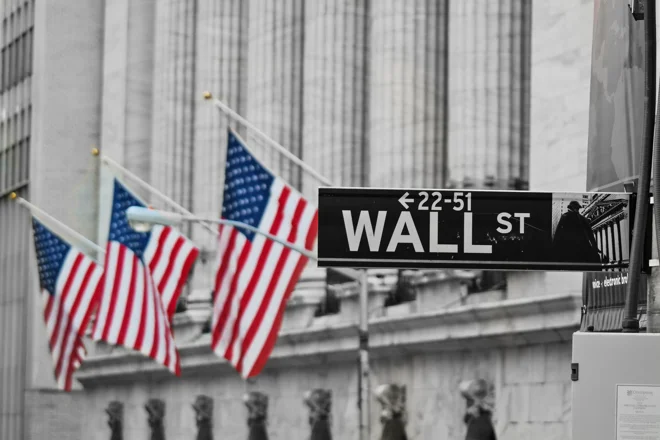Markets are full of sayings that somehow have to do with water: “one tide lifts all boats” when liquidity comes in; or, vice versa, “when the tide goes out, you find out who’s swimming naked”. Or they have to do with animals: are you a “bull” or a “bear”? Investors ask hurriedly. Turns out, if you pause to think about markets as psychologist Daniel Kahneman suggests in Thinking, Fast and Slow, you want to be a “chicken” at this juncture: rather than taking directional views, our portfolio positioning is in line with our long-term allocations and we see opportunities within asset classes rather than relative to each other. Market volatility was unusually subdued before the pandemic. Low inflation and interest rates coincided with the post-Global Financial Crisis recovery supporting economic and earnings growth. Volatility has now increased to medium levels on average. However, this average masks sudden volatility spikes, which have mostly been triggered, so far this year, by unexpected geopolitical events. They also highlight the market’s fears as central banks withdraw their support hard and fast – a support that has tended to suppress volatility previously.
Pressure points: The data are confirming our expectations of recession in the euro area and the UK. Record-high energy prices are likely to squeeze spending for consumers and businesses. Gas flows from Russia to Europe through the Nord Stream 1 pipeline have come to a halt. The US is more resilient, with pockets of weakness mainly linked to the ongoing increase in interest rates but also to the global slowdown. China still faces local lockdowns, though it continues to reopen on the whole. Inflation remains a dominant issue. In the US it appears to have peaked, but at a high level, and it’s unlikely to be a straight line down. Job market pressures may start to slow as the participation rate rises and wage growth stabilises, but housing costs and services inflation remain strong. Inflation isn’t yet peaking in the euro area and the UK, although energy price caps are likely to help.
Squeezing but peaking: The US hasn’t fallen into the ‘true’ definition of economic recession, though more rate hikes perhaps imply a slightly higher probability of (a shallow) one within 12 months. Gas-flow constraints will likely trigger a contraction in Europe, as implied by forward-looking indicators. The UK will likely follow the euro area and enter recession too, triggered by a mix of inflation, energy squeeze and rate hikes. China’s data have been disappointing recently and further stimulus is on the way. Central banks are prioritising fighting inflation over supporting growth. The European Central Bank is likely to continue increasing rates, but may pause next year if recession takes hold as we expect. The pace of hikes by the Fed will probably slow over the next few months (though balance-sheet retrenchment is accelerating). All this suggests to us that long-dated bond yields are peaking.
Here’s why this matters:
Global equities | No time for going big: Global equities remain in thrall of the economy’s gyrations as near-term uncertainty is still high. In this environment, we remain cautious by maintaining our overall equity and bond positioning in line with our long-term allocations. We still see relative value opportunities within equities and fixed income markets, and we’re maintaining our preference for a higher allocation to US and emerging market (EM) equities. To increase our weights in those regions, over the summer we reduced our exposure to euro area and global equities. Earnings and sales expectations in the euro area look optimistic compared with those in the US, likely triggering more significant earnings downgrades in the euro area over the next 2-3 quarters vs the US. EM equity valuations remain attractive relative to those of global equities. Economic conditions offer support for major EM countries through the prospect of policy easing or no more rate hikes as EM central banks are ahead of the curve and/or via a sense that most of the economic deterioration may be behind us.
Rates & FX | Dollar rules: Within fixed income, another change we implemented over the summer was to increase our exposure to high-quality US corporate bonds. Separately, we still prefer EM hard currency sovereign bonds (in USD) to low-yielding government bonds in developed markets such as the euro area and the UK. We think EM sovereign bonds offer attractive carry over their European counterparts. Currency-wise, the US dollar can still count on a relatively resilient domestic growth story and a hawkish Fed. Markets have priced in more rate hikes in the US/EU/UK, but it’s hard to see the European Central Bank and the Bank of England turning more hawkish than the Fed, given the recession we expect in Europe. Risks in the short term are titled towards USD strength and EUR & GBP weakness – especially after last week’s increase in UK government borrowing to fund tax cuts, which has worried FX and bond investors.
Meanwhile, (geo)politics continues to add to uncertainty…
Plenty of swing factors: The Russia/Ukraine conflict remains unpredictable, with the latest news suggesting yet another escalation. In Italy, preliminary results from yesterday’s election indicate that the centre-right coalition led by Brothers of Italy’s Giorgia Meloni may have secured one of the largest parliamentary majorities on record. No surprise there, but the policy outlook is uncertain: the 2023 budget is due, fiscal space looks limited, reforms are needed to continue to secure the EU recovery funds and the economy is entering recession. A re-escalation of Italian risks may widen BTP-Bund spreads, impact Italian banks and domestic firms, and weaken the euro. Data-wise, today’s German Ifo business climate should weaken further. On Friday, euro area inflation could rise to 10%, plus there’s a flurry of US consumer data and China’s purchasing managers’ indices. The Chinese Communist Party Congress in October is a catalyst we’re watching for any shift on policy and Covid.
Daniele Antonucci | Chief Economist & Macro Strategist
This document has been prepared by Quintet Private Bank (Europe) S.A. The statements and views expressed in this document – based upon information from sources believed to be reliable – are those of Quintet Private Bank (Europe) S.A. and are subject to change. This document is of a general nature and does not constitute legal, accounting, tax or investment advice. All investors should keep in mind that past performance is no indication of future performance, and that the value of investments may go up or down. Changes in exchange rates may also cause the value of underlying investments to go up or down.
Copyright © Quintet Private Bank (Europe) S.A. 2022. All rights reserved.





